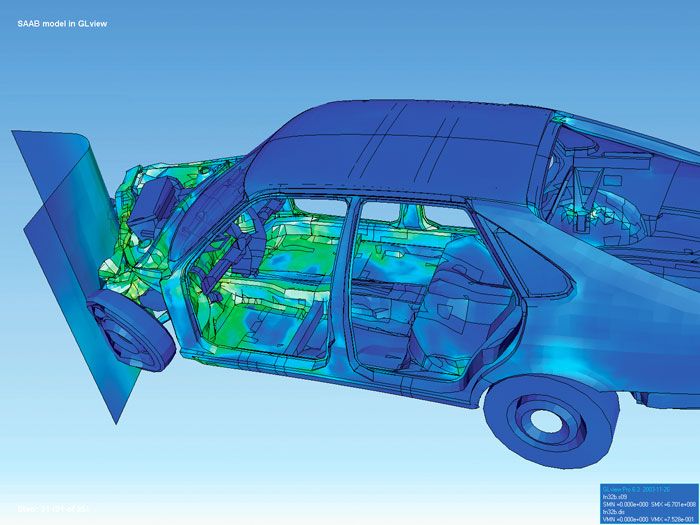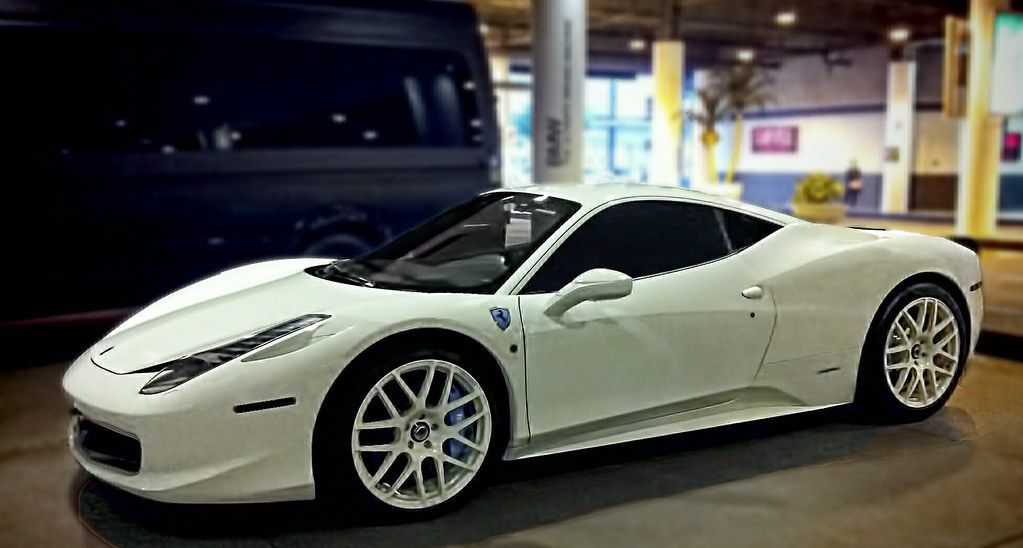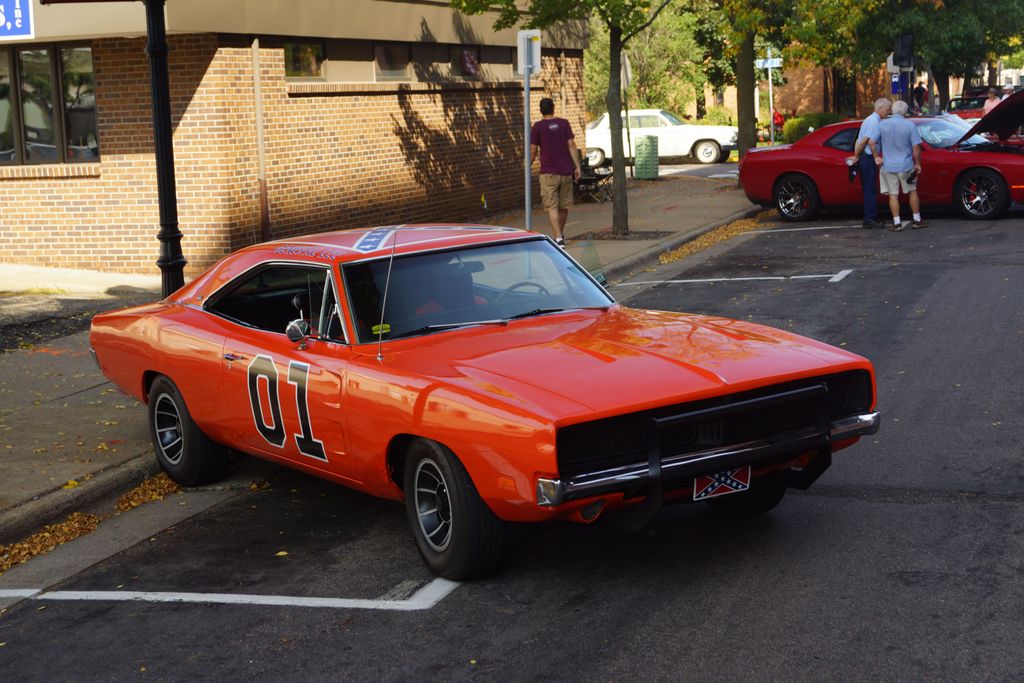
Ever hear of a car getting top billing on a TV show? When it comes to the scene-stealing General Lee from “The Dukes of Hazzard,” such recognition wouldn’t have been out of order. But it wasn’t just the General Lee; the 70s and 80s were a golden era for vehicles that transcended their metallic frames and became indelible characters in our favorite films and television series. They were more than just modes of transportation; they were extensions of their drivers, plot devices, and often, the silent heroes of the story.
We’re talking about the automobiles that left an enduring mark on our collective pop culture consciousness, vehicles that became instantly recognizable and deeply intertwined with the shows and movies they inhabited. Forget Ric Ocasek and those other ‘Cars,’ because we’re shining a spotlight on the genuine automotive icons that kept us glued to our screens, whether they were cruising the streets of San Francisco, tearing up the asphalt, or helping deliver some serious laughs. These rides didn’t just move people; they moved us.
So, buckle up, because we’re embarking on a journey across land, and sometimes even through time, to salute some of the most iconic vehicles from the television shows and films that defined the 1970s and 80s. From souped-up police cruisers to family-friendly wagons and even an RV from hell, these are the machines that truly became stars in their own right, proving that sometimes, the best supporting actor has four wheels and a roaring engine.

1. **“The Bluesmobile” from The Blues Brothers (1980)**When Jake and Elwood Blues set out on their “mission from God,” they needed a vehicle that could stand up to the challenge, and boy, did they get one. “The Bluesmobile,” a 1974 Dodge Monaco police car, wasn’t just a car; it was a character in itself, embodying the gritty, no-nonsense spirit of the Blues Brothers. It was a true workhorse, essential for their chaotic cross-country escapades.
Elwood proudly declared its impressive specs, famously stating, “It’s got a cop motor, a 440-cubic-inch plant. It’s got cop tires, cop suspension, cop shocks.” He even pointed out that it was “a model made before catalytic converters so it’ll run good on regular gas.” This was a car built for business, ready to handle any urban jungle or open highway the brothers encountered, making it instantly legendary.
Beyond its technical prowess, the Bluesmobile played a pivotal role in the film’s most memorable scenes. Remember the giant speaker strapped to the top, used to publicize their upcoming show? And, of course, it was central to one of cinema’s greatest chase sequences, plowing through a mall and leaping over obstacles with a kind of reckless abandon that only a true icon could pull off. It wasn’t just a car; it was their mobile stage, their escape pod, and a symbol of their unbreakable bond.
Car Model Information: 1977 Dodge Monaco
Name: Dodge Monaco
Caption: 1968 Dodge Monaco four-door hardtop
Manufacturer: Dodge
Related: Dodge Polara
ModelYears: 1965–1977 (full-size) , 1977–1978 (intermediate) , 1990–1992 (full-size)
Predecessor: Dodge Custom 880
Successor: Dodge St. Regis
Categories: 1970s cars, 1990s cars, All articles needing additional references, All articles that may contain original research, All articles with unsourced statements
Summary: The Dodge Monaco is an automobile that was marketed by the Dodge division of Chrysler Corporation. Introduced as the flagship of the Dodge product line, the Monaco was introduced for the 1965 model year to replace the Custom 880, then later joined as a sub-model of the Dodge Polara. During its production, the Monaco was offered in several body configurations, including two-door and four-door hardtop sedans, four-door sedans, two-door convertibles, and station wagons.
From 1965 to 1977, three generations of the Monaco were produced with the full-size Chrysler C platform. For 1977 and 1978, Dodge shifted the Monaco to the intermediate Chrysler B platform, effectively downsizing the model line. For 1979, the model line was redesigned and renamed the Dodge St. Regis.
After a 12-year hiatus, the full-size Monaco was revived for the 1990 model year as the flagship Dodge sedan, replacing the Diplomat. This was a rebadged version of the Eagle Premier which was developed by Renault and American Motors Corporation (AMC). The Monaco was replaced by the Dodge Intrepid for the 1993 model year.
It is named after the Principality of Monaco.
Get more information about: Dodge Monaco
Buying a high-performing used car >>>
Brand: Dodge Model: Monaco
Price: $8,712 Mileage: 92,505 mi.
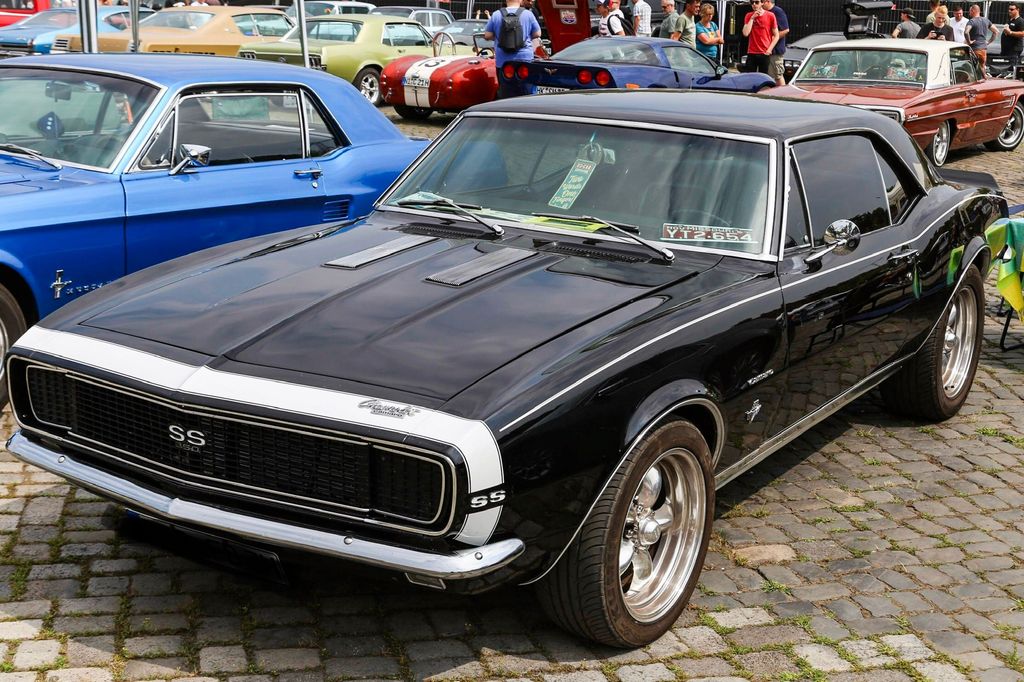
2. **Lane’s black 1967 Chevy Camaro from Better Off Dead (1985)**For anyone who has ever felt stuck or uninspired, Lane Meyer’s black 1967 Chevy Camaro from “Better Off Dead” offers a fantastic metaphor. Initially, this classic muscle car “has darkened our driveway for six months,” a reflection of Lane’s own stalled life and emotional struggles. Its dilapidated state mirrors his own feelings of being broken and neglected, making it a powerful symbol throughout the film.
As Lane begins to fix up the car, a process he undertakes with the help of the charming French exchange student Monique, the Camaro transforms, and so does he. This shared project becomes a catalyst for his personal growth, building his confidence and bringing the two characters romantically closer. It’s a wonderful example of how a vehicle can be so much more than metal and tires; it becomes a canvas for character development and burgeoning romance.
By the film’s climax, the restored Camaro is not just a car; it’s a symbol of Lane’s triumph. He not only wins the pivotal K-12 ski race, but the car also helps him gain final revenge, famously dusting the drag racing Asian brothers. The enduring appeal of this car is so strong that a real-life fan actually hunted down and restored the original Camaro from the film, proving its iconic status and allowing fans a chance to see it at car shows or conventions.
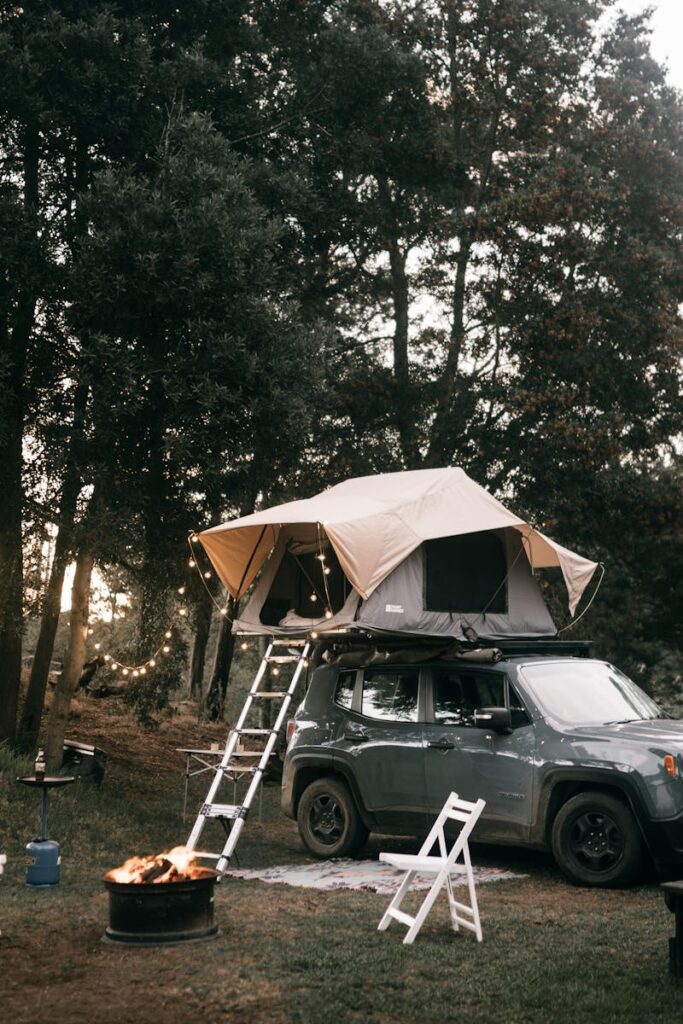
3. **Cousin Eddie’s RV from National Lampoon’s Christmas Vacation (1989)**If you’re looking for a vehicle that perfectly encapsulates the chaotic charm of an unexpected family visit, look no further than Cousin Eddie’s RV from “National Lampoon’s Christmas Vacation.” This “tenement on wheels,” as Clark Griswold so eloquently puts it, is introduced with a classic exchange: “Oh, that uh, that there’s an RV. Yeah, yeah, I borrowed it off a buddy of mine. He took my house, I took the RV. It’s a good looking vehicle, ain’t it?”
The RV’s sudden appearance and its rather, shall we say, *rustic* aesthetic immediately signals trouble and hilarity for the Griswold family. It’s a vehicle that doesn’t just transport Eddie, Catherine, and their brood; it transports a whole new level of comedic mayhem directly into Clark’s meticulously planned, yet doomed, Christmas. Its very presence in the pristine Griswold driveway is a visual gag that keeps on giving.
This motorhome is a crucial element in some of the movie’s most side-splitting moments, from the raw sewage hose to the surprise appearance of a squirrel. It embodies Eddie’s unrefined, yet oddly endearing, character and serves as a constant source of discomfort and laughs for the uptight Clark. The RV is more than a borrowed vehicle; it’s a temporary, mobile monument to holiday chaos that no one, especially Clark, will ever forget.
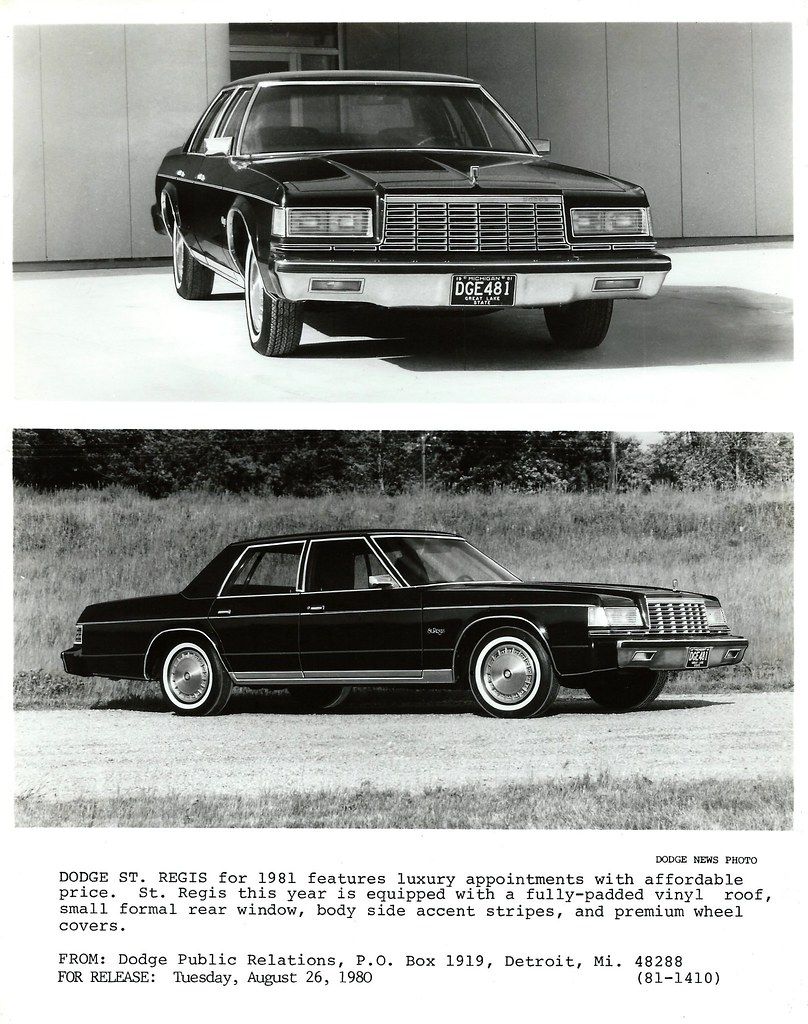
4. **EM-50 Urban Assault Vehicle from Stripes (1981)**When you think of a high-tech military weapon, you probably don’t picture a motor home, right? Well, that’s precisely the genius of the EM-50 Urban Assault Vehicle from the classic Bill Murray comedy “Stripes.” This top-secret weapon is a masterclass in comedic disguise, looking like a perfectly normal RV on the outside, but hiding an impressive arsenal within. It’s the ultimate ‘sleeper’ vehicle, designed for covert operations.
But being bored with merely guarding this classified contraption, Bill Murray’s character and his buddy Harold Ramis decide that nobody would notice if they borrowed it for a little jaunt to pick up their girlfriends in West Germany. This decision, of course, leads to inevitable, hilarious chaos. The EM-50 isn’t just a prop; it’s a key player in the film’s madcap plot, allowing for ludicrous military stunts and misunderstandings.
Beneath its unassuming exterior, the EM-50 can quickly deploy bullet-proof armor, along with a terrifying array of missile launchers, machine guns, and even a flame thrower. It’s the kind of vehicle that makes you wish for a zombie apocalypse just so you could justify owning one! Its blend of mundane appearance and over-the-top firepower makes it an enduring comedic icon and a testament to the film’s playful spirit.
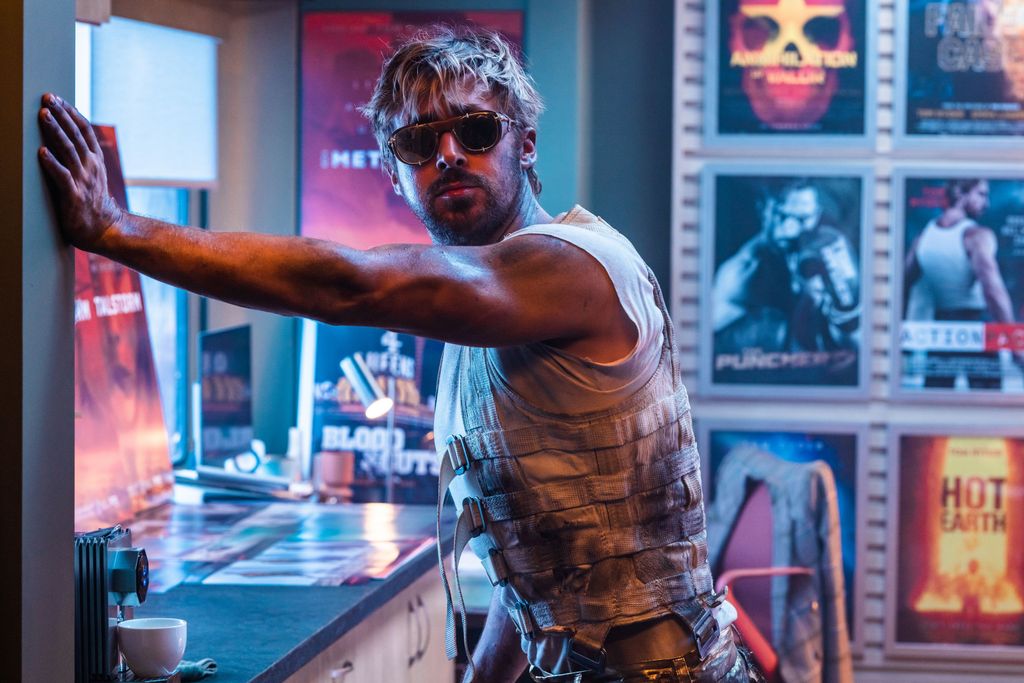
5. **Colt Seavers’ GMC Sierra pick-up from The Fall Guy (1981-1986)**If you were a kid in the 80s, chances are you wanted to be Colt Seavers, and you definitely wanted his truck. Colt, played by the effortlessly cool Lee Majors, was a stuntman who moonlighted as a bounty hunter, and his trusty GMC Sierra pick-up was his most reliable partner in crime-fighting. This truck wasn’t just for hauling equipment; it was an integral part of his high-flying, action-packed adventures.
The truck itself was a beast, instantly recognizable with its big chrome roll bar, complete with off-road lights mounted on top, ready for any jump or chase scene. It also boasted a prominent eagle decal on the hood, a symbol of its soaring spirit and Colt’s daring nature. Adding to its mystique, the truck featured a secret compartment in the bed, perfect for hiding evidence, tools, or even bad guys.
What made this GMC Sierra truly iconic was its frequent use in jaw-dropping stunts, often culminating in a spectacular leap over something, or someone. It looked even better when the equally iconic Heather Thomas was in or anywhere near it, adding to the show’s glamorous, action-packed appeal. Colt Seavers’ truck was more than a vehicle; it was a character that defined an era of television action.
Car Model Information: 2024 GMC Sierra 1500 SLT
Name: Chevrolet Silverado/GMC Sierra
Caption: 2022 Silverado 2500HD High Country
Manufacturer: General Motors
Aka: unbulleted list
Production: 1998–present
Assembly: unbulleted list
Class: unbulleted list
BodyStyle: unbulleted list
Layout: unbulleted list
Predecessor: unbulleted list
Categories: 2000s cars, 2010s cars, 2020s cars, All-wheel-drive vehicles, All Wikipedia articles written in American English
Summary: The Chevrolet Silverado is a range of trucks manufactured by General Motors under the Chevrolet brand. Introduced for the 1999 model year, the Silverado is the successor to the long-running Chevrolet C/K model line. Taking its name from the top trim level from the Chevrolet C/K series, the Silverado is offered as a series of full-size pickup trucks, chassis cab trucks, and medium-duty trucks. The fourth generation of the model line was introduced for the 2019 model year.
The Chevrolet Silverado shares mechanical commonality with the identically related GMC Sierra; GMC ended the use of the C/K nomenclature a model generation prior to Chevrolet. In Mexico, high-trim level versions of the Silverado use the Chevrolet Cheyenne name (not to be confused with the 2003 concept). Competing against the Ford F-Series, Ram pickup, Toyota Tundra, and Nissan Titan, the Silverado is among the best-selling vehicles in the United States, having sold over 12 million trucks since its introduction in 1998 as a 1999 model year.
Get more information about: Chevrolet Silverado
Buying a high-performing used car >>>
Brand: GMC Model: Sierra
Price: $43,507 Mileage: 25,115 mi.
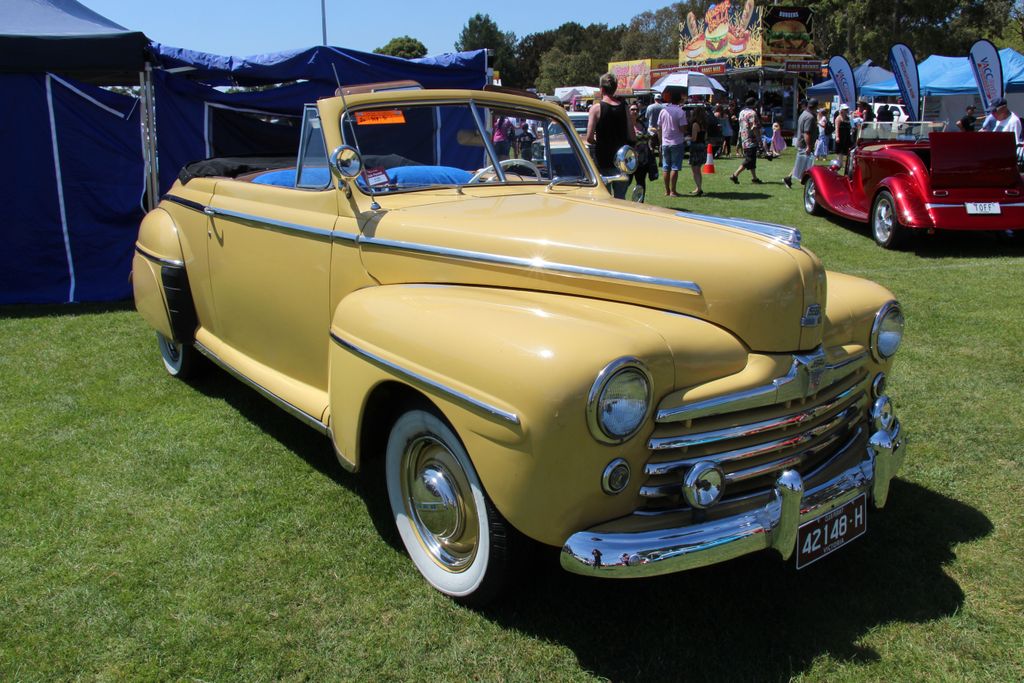
6. **Yellow 1948 Ford Super DeLuxe from The Karate Kid (1984)**Few cars are as deeply intertwined with a life lesson as the yellow 1948 Ford Super DeLuxe from “The Karate Kid.” This classic automobile wasn’t just Mr. Miyagi’s car; it was the foundation of Daniel-san’s karate training. As Daniel begins his lessons, he’s tasked with washing and waxing several of Miyagi’s cars, including this particular Ford, using the now-legendary “Wax on, wax off” mantra. This seemingly simple chore, repeated endlessly, becomes the core of his defensive blocks.
Initially, the car is just a tool for Miyagi’s unique teaching methods, but it quickly evolves into something far more significant. After weeks of diligent, often frustrating, work, Daniel receives the car as a birthday gift from Mr. Miyagi. This moment transforms the car from a training tool into a symbol of Miyagi’s mentorship, Daniel’s hard work, and the bond they’ve formed. It’s a gift that represents much more than its monetary value, truly symbolizing the progress Daniel has made.
Of course, Daniel wastes no time showing off his new ride, cruising with Ali to Golf N Stuff while the song “Young Hearts” plays, solidifying its place in a truly iconic movie moment. The car wasn’t just part of the story; it became part of the ‘Karate Kid’ lore. As a fun piece of trivia, one of the producers gave this actual car to Ralph Macchio after filming was completed, proving its enduring legacy and making it a tangible piece of cinematic history.
Cruising into the spotlight, we’ve already revved up our engines with a taste of the automotive legends that became just as famous as their human counterparts. But hold onto your hubcaps, because the road to iconic vehicle stardom is still wide open! We’re about to unveil the remaining six legendary rides that didn’t just drive into our hearts; they truly *became* stars in their own right, delivering unforgettable cinematic moments, boasting unique design quirks, and cementing an enduring legacy on the pop culture landscape of the 70s and 80s. Get ready for more four-wheeled greatness!
Car Model Information: 2025 Volkswagen Atlas 2.0T SE
Name: De Luxe Ford
Manufacturer: Ford Motor Company
Production: 1937–1940
Successor: None (from 1941 the Ford Deluxe reverted to trim-level status)
Class: Luxury car
Related: 1937 Ford
BodyStyle: coupe,convertible (car),Pickup truck,Sedan (automobile),van,ambulance,Phaeton body,Sedan (automobile),station wagon
Engine: Ford Flathead engine,V8 engine
Length: 179.5 in
Abbr: on
Categories: All articles lacking reliable references, Articles lacking reliable references from August 2022, Articles with short description, Convertibles, Coupés
Summary: Ford Motor Company introduced its De Luxe Ford line in 1938 as an upscale alternative to bridge the gap between its base model (usually called Standard) and luxury Lincoln offerings. The “Deluxe” name was first used starting in 1930 to specify an upscale trim starting with the Model 40-B and Model 45-B, then later the De Luxe Ford line was differentiated as a separate “marque within a marque” with separate styling and pricing through 1940. During 1939, Ford had five lines of cars: Ford, De Luxe Ford, Mercury, Lincoln-Zephyr, and Lincoln. After the war, this was simplified to Ford, Mercury, and Lincoln. The 1941 Ford line included “De Luxe” and “Super De Luxe” trim, but these vehicles were not marketed as a separate line. As Mercury Eight sales progressed, the De Luxe approach was cancelled.
This marketing approach was in response to the different General Motors brands, (Cadillac, Buick, Oldsmobile, Pontiac, and Chevrolet), and the Chrysler brands, (Chrysler, DeSoto, Dodge, and Plymouth).
The De Luxe Fords of 1938 featured a more sloping hood and ornamental heart-shaped grille. This look was passed on to the standard line for 1939, as the De Luxe Fords gained sharp v-shaped grilles with vertical bars. The standard line once again inherited the De Luxe look for 1940, this time with body-colored vertical bars. The 1940 De Luxe Ford featured a three-part grille with horizontal bars.
Get more information about: De Luxe Ford
Buying a high-performing used car >>>
Brand: Ford Model: Super DeLuxe
Price: $40,000 Mileage: 8,605 mi.
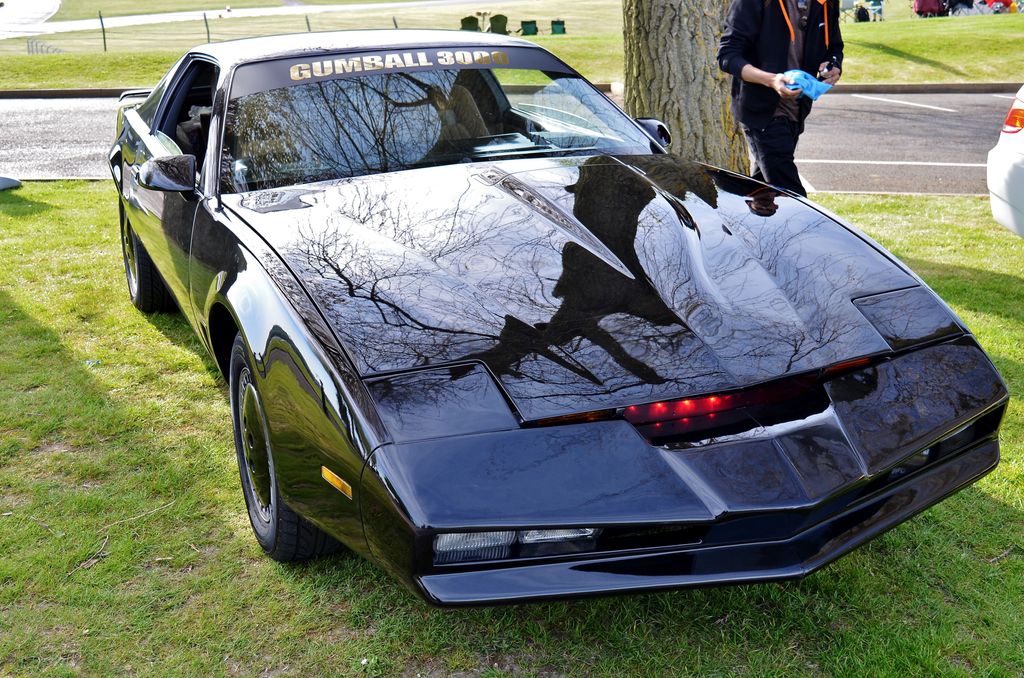
7. **K.I.T.T. (Knight Industries Two Thousand) from Knight Rider (1982-1986)**Alright, let’s be honest, for many of us, David Hasselhoff’s Michael Knight was cool, but K.I.T.T. was the real star of the show. This flashy black Pontiac Firebird Trans Am T-top wasn’t just a car; it was Knight Industries Two Thousand, a highly advanced artificial intelligence unit that controlled the vehicle itself. It spoke, it reasoned, and it was voiced with undeniable gravitas by William Daniels, giving the car a distinct personality that rivaled Michael’s own. The very idea of a talking, self-aware car was pure 80s magic.
K.I.T.T. wasn’t just a fancy prop; it was the ultimate crime-fighting partner, always ready with a witty retort or a logical solution, even when Michael was prone to rash decisions. Its sleek, futuristic design, complete with that iconic red scanner bar across the front, perfectly encapsulated the tech-savvy vibe of the 1980s. The show pushed the boundaries of what a car could be, making K.I.T.T. a symbol of technological dreams and a vehicle that truly felt alive, blurring the lines between machine and character.
The phenomenon surrounding K.I.T.T. was immense, sparking an obsession among superfans who yearned for a car that could do more than just get them from point A to point B. Its popularity led to countless toys, replicas, and a lasting impression on popular culture, proving that sometimes, the most unforgettable character on screen is the one with an engine and a computer brain. K.I.T.T. didn’t just drive; it thought, it felt, and it became an irreplaceable part of television history, driving its way into the hearts of a generation.
Car Model Information: 2018 Acura RDX Technology & AcuraWatch Plus Package
Name: Pontiac Firebird
Caption: The second, third, and fourth generations of,the Pontiac Firebird Trans Am
Manufacturer: Pontiac (automobile)
Production: February 23, 1967 – August 30, 2002
ModelYears: 1967 – 2002
Class: Pony car,Muscle car
Platform: GM F platform
Related: Chevrolet Camaro
Layout: Front engine, rear-wheel-drive layout
Categories: 1970s cars, 1980s cars, 1990s cars, 2000s cars, All articles with dead external links
Summary: The Pontiac Firebird is an American automobile built and produced by Pontiac from the 1967 to 2002 model years. Designed as a pony car to compete with the Ford Mustang, it was introduced on February 23, 1967, five months after GM’s Chevrolet division’s platform-sharing Camaro. This also coincided with the release of the 1967 Mercury Cougar, Ford’s upscale, platform-sharing version of the Mustang.
The name “Firebird” was also previously used by GM for the General Motors Firebird series of concept cars in the 1950s.
Get more information about: Pontiac Firebird
Buying a high-performing used car >>>
Brand: Pontiac Model: Firebird Trans Am
Price: $21,552 Mileage: 46,554 mi.
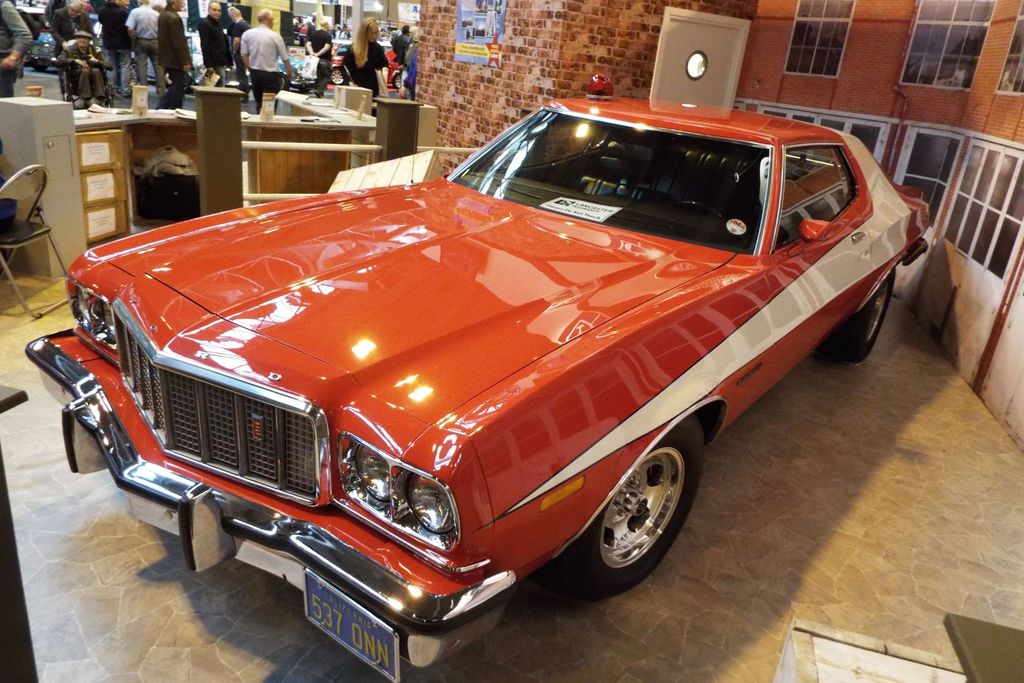
8. **Red and White-Striped 1974-76 Ford Gran Torino from Starsky & Hutch (1975-1979)**If there’s one car that perfectly embodies the swagger and playful banter of 1970s police work, it’s Starsky’s red and white-striped Ford Gran Torino. Driven by Paul Michael Glaser’s David Starsky and shared with David Soul’s Ken Hutchinson, this car wasn’t just a means of transport for the Southern California police detectives; it was practically a third character in their high-stakes, yet often humorous, crime-fighting adventures. Its distinctive paint job made it instantly recognizable, whether it was tearing through city streets or sliding around corners in a dramatic chase.
The Gran Torino’s iconic status was cemented by its appearance and the affection with which Starsky himself referred to it. He famously nicknamed it the “Striped Tomato” in one episode, a moniker that stuck and became synonymous with the car. This playful reference highlighted the vehicle’s vibrant, almost cartoon-like presence, setting it apart from more conventional police cruisers of the era. It was flashy, bold, and perfectly matched the personalities of its daring drivers, becoming a visual shorthand for the show’s cool, energetic vibe.
Its enduring appeal is so strong that the “Striped Tomato” was, unsurprisingly, reprised in the 2004 movie version, starring Ben Stiller and Owen Wilson. This cinematic nod further cemented the Gran Torino’s place in the pantheon of iconic TV cars, proving that its vibrant design and association with two beloved detectives transcended its original run. It’s a testament to how a unique vehicle can become a powerful symbol, effortlessly recalling the high-octane, fun-loving spirit of a classic television series for generations to come.
Car Model Information: 2025 Volkswagen Atlas 2.0T SE
Aka: Ford Fairlane (Venezuela)
Name: Ford Torino
Caption: 1970 Ford Torino Cobra SportsRoof
Manufacturer: Ford Motor Company
Production: 1968–1976
Class: Mid-size car,muscle car
Layout: FR layout
Related: Mercury Montego
Assembly: ubl
Predecessor: Ford Fairlane (Americas)
Successor: Ford LTD II
Categories: 1960s cars, 1970s cars, All Wikipedia articles written in American English, All articles with vague or ambiguous time, Articles with short description
Summary: The Ford Torino is an automobile that was produced by Ford for the North American market between 1968 and 1976. It was a competitor in the intermediate market segment and essentially a twin to the Mercury Montego line.
Just as the Ford LTD had been the upscale version of the Ford Galaxie, the Torino was initially an upscale variation of the intermediate-sized Ford Fairlane. In the 1968 and 1969 model years, the intermediate Ford line consisted of lower-trim Fairlanes and its subseries, the upper-trim Torino models. In 1970, Torino became the primary name for Ford’s intermediate, and the Fairlane was now a subseries of the Torino. In 1971, the Fairlane name was dropped altogether, and all Ford intermediates were called Torino.
Most Torinos were conventional cars, and generally the most popular models were the four-door sedans and two-door hardtops. However, Ford produced some high-performance “muscle car” versions of the Torino by fitting them with large powerful engines, such as the 428 cu in (7.0 L) and 429 cu in (7.0 L) “Cobra-Jet” engines. Ford also chose the Torino as the base for its NASCAR entrants, and it has a successful racing heritage.
Get more information about: Ford Torino
Buying a high-performing used car >>>
Brand: Ford Model: Gran Torino
Price: $40,000 Mileage: 8,605 mi.
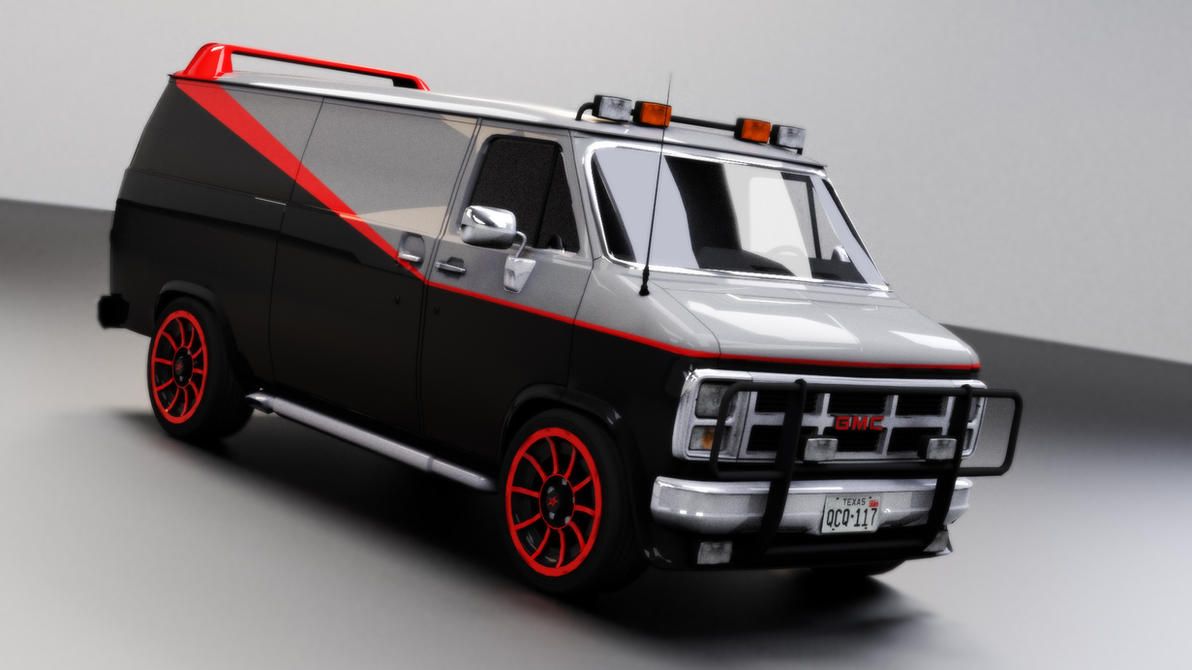
9. **1983 GMC Vandura from The A-Team (1983-1987)**When a team of ex-Special Forces soldiers on the run needs a mobile base of operations, it better be something seriously cool and incredibly versatile. Enter the 1983 GMC Vandura van from “The A-Team.” This isn’t just any van; it’s a legend, instantly recognizable by its distinctive black and grey paint job, bold red stripe, and that signature rooftop spoiler. It was the unofficial fifth member of the team, carrying Hannibal, Face, Murdock, and, of course, the one and only Mr. T, with all his chains and catchphrases, straight into action.
This Vandura was more than just a cool exterior; it was a veritable Swiss Army knife on wheels, filled with what the context refers to as “numerous devices” – tools, weapons, and impromptu solutions to whatever predicament the team found themselves in. It served as their transport, their mobile command center, and often, their means of escaping explosive situations. The van’s design elements, particularly that unmistakable red stripe and rooftop spoiler, became as iconic as the show’s explosive action sequences and over-the-top character antics, defining a generation’s idea of what an action hero’s vehicle should look like.
The van’s cultural impact was massive, cementing its place as an automotive icon. Its significance is such that the original vehicle was proudly displayed at the New York International Auto Show in 2010, a rare honor for a television prop. It wasn’t just a vehicle used in a show; it was a character that moved the plot forward, facilitated daring escapes, and became synonymous with the phrase “I love it when a plan comes together!” The A-Team van represents the perfect blend of utility, style, and pure 80s action, forever etched in our minds.
Car Model Information: 1992 GMC Vandura G25 2dr Cargo
Name: Chevrolet/GMC van
Production: 1964–1996
Assembly: Flint Truck Assembly,Pontiac East Assembly
Predecessor: Chevrolet Corvair 95,Chevrolet Suburban#Sixth generation (1967)
Successor: Chevrolet Express
Manufacturer: Chevrolet
BodyStyle: Full-size car,van
Caption: 1992–1996 Chevrolet Sportvan
Categories: 1970s cars, 1980s cars, 1990s cars, All-wheel-drive vehicles, All Wikipedia articles written in American English
Summary: The Chevrolet van or Chevy van (also known as the Chevrolet/GMC G-series vans and GMC Vandura) is a range of vans that was manufactured by General Motors from the 1964 to 1996 model years. Introduced as the successor for the rear-engine Corvair Corvan/Greenbrier, the model line also replaced the panel van configuration of the Chevrolet Suburban. The vehicle was sold both in passenger van and cargo van configurations as well as a cutaway van chassis that served as the basis for a variety of custom applications.
Produced across three generations (1964–1966, 1967–1970, and 1970–1996), the model line was sold under a wide variety of model names under both the Chevrolet and GMC brands. The first two generations were forward control vehicles (with the engine placed between the seats); the third generation adopted a configuration placing the engine forward of the driver. The second and third generations shared powertrain commonality with the C/K pickup truck model line.
After the 1996 model year, GM retired the G-Series vans, replacing them with the GMT600-platform Chevrolet Express and GMC Savana.
Get more information about: Chevrolet van
Buying a high-performing used car >>>
Brand: GMC Model: Vandura
Price: $19,950 Mileage: 42,012 mi.
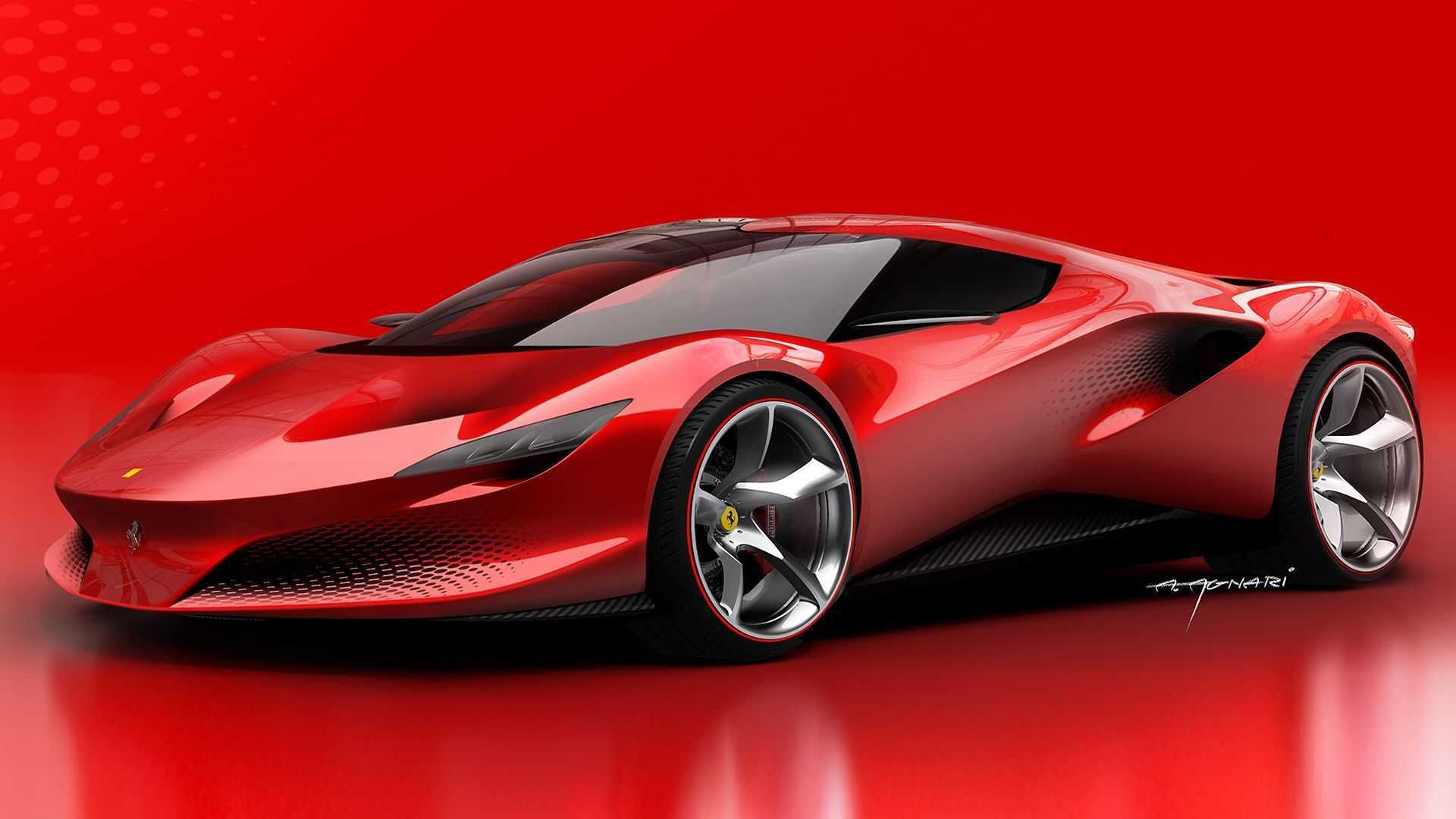
10. **Ferrari 308 GTS from Magnum, P.I. (1980-1988)**For anyone who dreamed of solving crimes in paradise, the ultimate accessory was undoubtedly a sleek, red Ferrari 308 GTS, just like the one Tom Selleck’s mustachioed private eye, Thomas Magnum, often cruised around in on the lush Hawaiian crime scene. This wasn’t just Magnum’s car; it was technically owned by Robin Masters, the elusive novelist whose estate Magnum lived on and secured. It symbolized the luxurious yet adventurous lifestyle that the show so expertly showcased, making viewers wish they too could be investigating mysteries with a cool car and a pristine island backdrop.
The show featured several iterations of the Ferrari 308 GTS throughout its run, evolving subtly with each season. Initially, in the first season, it was a 1978 308 GTS, noticeable for its single mirror, lack of a rear spoiler, and red vents behind the headlights. As the series progressed into its second and third seasons, it transitioned to a 1980 308 GTSi, identifiable by its two rectangular mirrors and black vents behind the headlights. For the remainder of the series, Magnum was often seen in a 1984 308 GTSi Quattrovalvole, which sported black vents on the hood and a sleek black spoiler on the rear of the roof panel, showcasing the car’s evolution alongside the show’s enduring popularity.
One fascinating detail about the Ferrari’s on-screen presence was how it was adapted for its tall star. Tom Selleck, standing at a formidable 6’4″, required special modifications to fit comfortably into the sports car. The padding was literally removed from the seats to lower him, and the seats themselves were bolted as far back as possible to maximize legroom. Even with these custom adjustments, Magnum’s head often appeared higher than the top of the front windshield frame, and you rarely saw him drive with the top up—a signature look that added to the character’s charm and the car’s allure. This meticulous attention to detail underscored the Ferrari’s central role, making it more than just a prop, but a tailored extension of the iconic P.I. himself.
Car Model Information: 2025 Volkswagen Atlas 2.0T SE
Name: Ferrari 308 GTB and GTS
Manufacturer: Ferrari
Production: 1975–1985
Assembly: Maranello
Designer: Leonardo Fioravanti (engineer)
Class: Sports car
BodyStyle: Berlinetta
Layout: Transverse engine,Rear mid-engine, rear-wheel-drive layout
Related: Ferrari GT4,Ferrari Mondial,Ferrari 288 GTO
Wheelbase: convert
Length: 4230 mm
Abbr: on
Width: 1720 mm
Height: 1120 mm
Predecessor: Dino 206 GT and 246 GT
Successor: Ferrari 328
Sp: uk
Caption: 1976 Ferrari 308 GTB
Categories: 1980s cars, All articles with dead external links, Articles with dead external links from August 2025, Articles with permanently dead external links, Articles with short description
Summary: The Ferrari 308 GTB berlinetta and targa-topped 308 GTS are V8 mid-engined, two-seater sports cars manufactured by the Italian company Ferrari from 1975 until 1985. The 308 replaced the Dino 246 GT and GTS in 1975 and was updated as the 328 GTB/GTS in 1985. The similar 208 GTB and GTS were equipped with a smaller, initially naturally aspirated and later turbocharged, two-litre engine, and were sold mainly in Italy.
Get more information about: Ferrari 308 GTB/GTS
Buying a high-performing used car >>>
Brand: Ferrari Model: 308 GTS
Price: $40,000 Mileage: 8,605 mi.
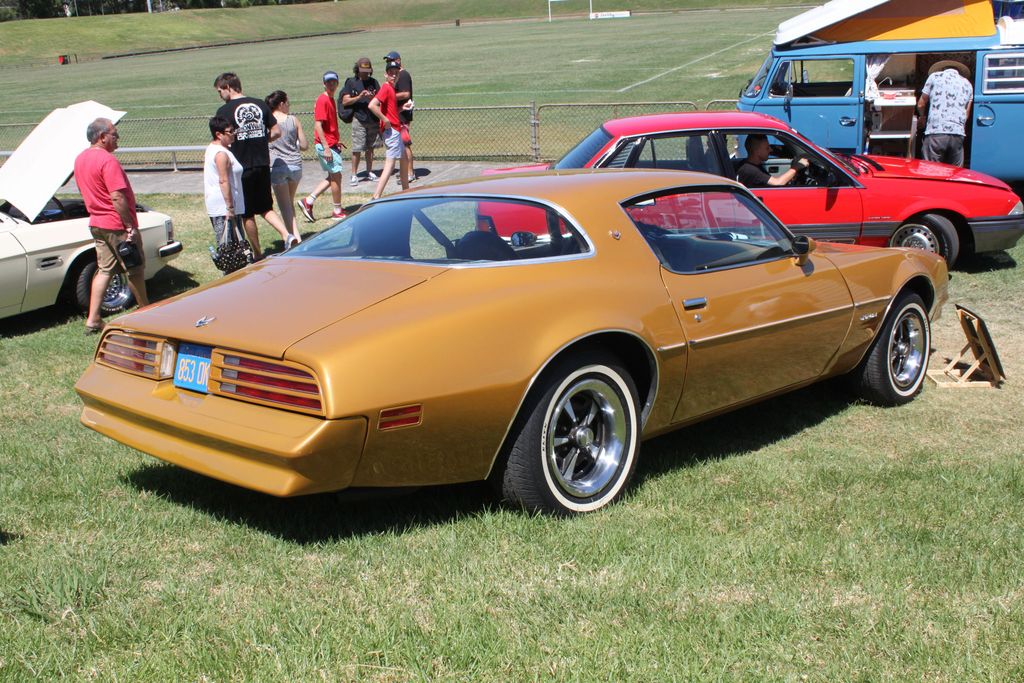
11. **Gold Pontiac Firebird from The Rockford Files (1974-1980)**When you think of a private investigator who blends scampish charm with street smarts, you think of Jim Rockford, played by the effortlessly cool James Garner. And right alongside him in almost every caper was his signature ride: a gold Pontiac Firebird. This car wasn’t just a background element; it was as much a part of Rockford’s identity as his trailer home and his answering machine gags. Initially, an Espirit model, and later Formula 400s cleverly made to look like Esprits, the Firebird was the perfect vehicle for a P.I. who often found himself in precarious situations.
The Firebird was integral to the show’s action, especially with Rockford’s famous defensive driving maneuver: the “Jim Rockford J-turn.” This unique move, which involved rapidly turning the car 180 degrees in reverse to face forward, was incredibly useful whether Rockford was chasing down bad guys or, more often, expertly escaping from them. It became a hallmark of the series, showcasing Rockford’s cleverness and resourcefulness and providing exciting, memorable car sequences that set the show apart from other crime dramas of the era.
The enduring legacy of Rockford’s Firebird is evident in its continued appeal long after the show’s run. One of the last Firebirds actually used on the series was sold at auction in 2019, a testament to its iconic status and the affection fans still hold for the show and its star vehicle. It’s a classic example of how a car, through its association with a beloved character and memorable on-screen moments, transcends its automotive origins to become a true pop culture icon, perpetually ready for its next J-turn.
Car Model Information: 1983 Pontiac Firebird Trans Am 2D Coupe
Name: Pontiac Firebird
Caption: The second, third, and fourth generations of,the Pontiac Firebird Trans Am
Manufacturer: Pontiac (automobile)
Production: February 23, 1967 – August 30, 2002
ModelYears: 1967 – 2002
Class: Pony car,Muscle car
Platform: GM F platform
Related: Chevrolet Camaro
Layout: Front engine, rear-wheel-drive layout
Categories: 1970s cars, 1980s cars, 1990s cars, 2000s cars, All articles with dead external links
Summary: The Pontiac Firebird is an American automobile built and produced by Pontiac from the 1967 to 2002 model years. Designed as a pony car to compete with the Ford Mustang, it was introduced on February 23, 1967, five months after GM’s Chevrolet division’s platform-sharing Camaro. This also coincided with the release of the 1967 Mercury Cougar, Ford’s upscale, platform-sharing version of the Mustang.
The name “Firebird” was also previously used by GM for the General Motors Firebird series of concept cars in the 1950s.
Get more information about: Pontiac Firebird
Buying a high-performing used car >>>
Brand: Pontiac Model: Firebird
Price: $22,991 Mileage: 38,257 mi.
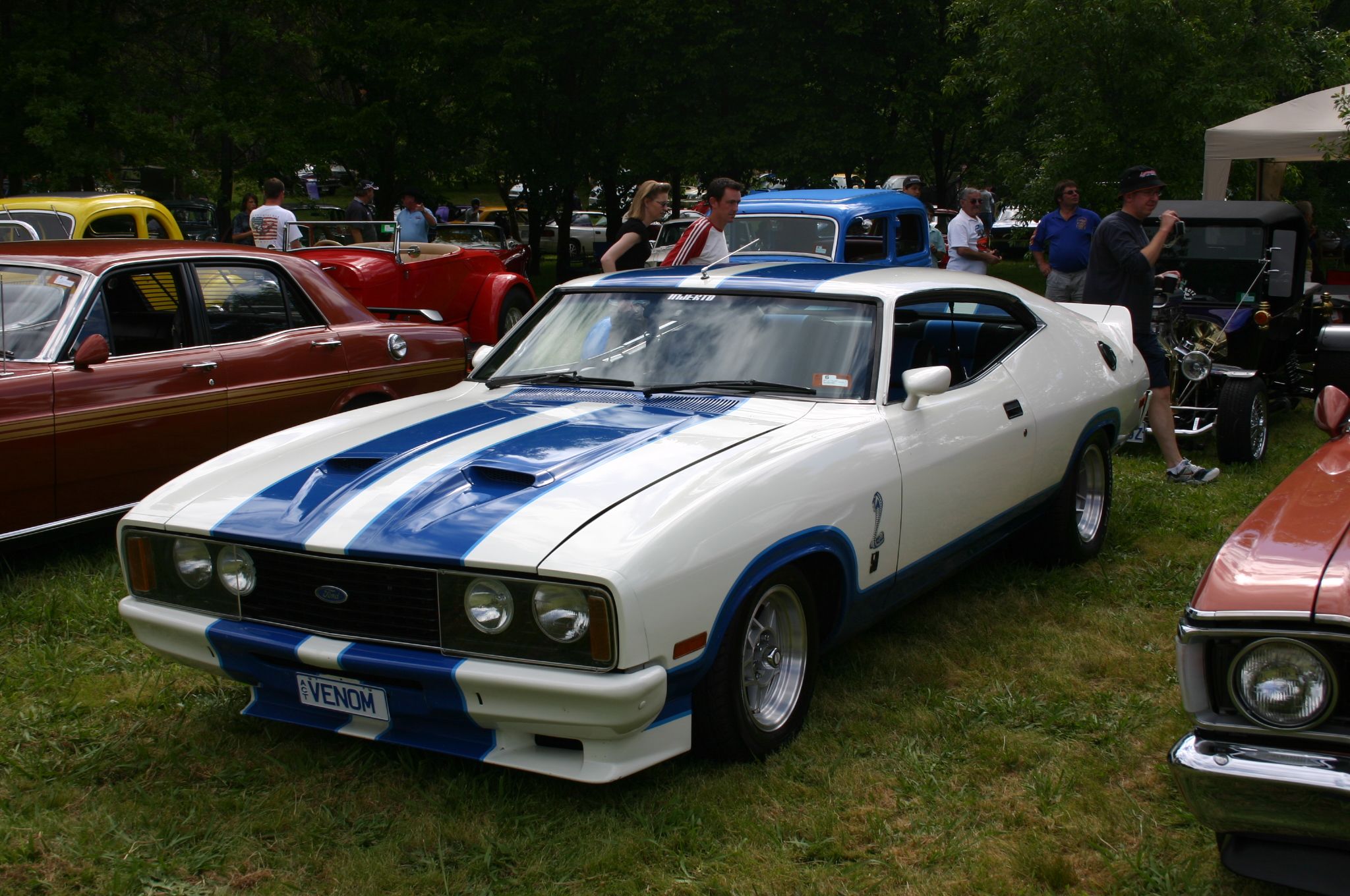
12. **White and Blue-Striped 1976 Ford Mustang Cobra II from Charlie’s Angels (1976-1981)**While Farrah Fawcett’s dazzling smile and feathered hair certainly captured the nation’s attention during her time as Jill Munroe on “Charlie’s Angels,” there’s no denying that her choice of wheels also turned heads. Jill, the fearless private investigator, tooled around town in a distinct white and blue-striped 1976 Ford Mustang Cobra II. This car perfectly complemented her adventurous spirit and fashion-forward style, making it more than just a car—it was an extension of the iconic “Angel” herself.
The Mustang Cobra II, with its sporty stripes and classic American muscle car appeal, became an immediate visual shorthand for the show’s glamorous and action-packed narrative. It wasn’t a super-spy gadget car or a rugged workhorse, but a stylish, accessible vehicle that still exuded a sense of cool and independence. It fit perfectly into the sun-drenched Southern California setting of the series, often seen cruising through picturesque streets as Jill embarked on her latest undercover assignment, making every drive look effortlessly chic and exciting.
Its enduring popularity is a testament to the show’s influence and Farrah Fawcett’s star power. The car, much like Fawcett’s image, became a cultural touchstone of the late 70s, symbolizing freedom, flair, and a hint of daring. The internet buzz even suggests that the original car from the show is now in the hands of a dedicated restorer, ensuring that this piece of automotive and television history will continue to inspire new generations of fans. It’s clear that this Mustang didn’t just drive; it cruised its way into television legend, forever associated with one of the most beloved “Angels” of all time.
Car Model Information: 2025 Volkswagen Atlas 2.0T SE
Name: Second generation
Caption: Ford Mustang II coupe
Aka: Ford Mustang II , Ford T5 (in Germany)
Class: Pony car,Subcompact car
Production: 1973–1978
ModelYears: 1974–1978
Predecessor: Ford Mustang (first generation)
Successor: Ford Mustang (third generation)
Assembly: Unbulleted list
Layout: Front-engine, rear-wheel-drive layout
BodyStyle: coupé,hatchback
Related: Ford Pinto,Ford Pinto
Manufacturer: Ford Motor Company
Engine: ubl
Transmission: ubl
Wheelbase: cvt
Length: cvt
Width: cvt
Height: cvt
Designer: Buck Mook, Dick Nesbitt
Categories: All articles with dead external links, All articles with unsourced statements, Articles with dead external links from April 2024, Articles with permanently dead external links, Articles with short description
Summary: The second-generation Ford Mustang, marketed as the Ford Mustang II, is a two- or three-door, four-passenger, front-engine/rear-drive pony car manufactured and marketed by Ford from 1973 until 1978. Introduced in September 1973 for the 1974 model year, the Mustang II arrived roughly coincident with the oil embargo of 1973 and subsequent fuel shortages. Developed under Lee Iacocca, it was an “entirely new kind of pony car.” Ford “decided to call it Mustang II, since it was a new type of pony car designed for an era of high gas prices and fuel shortages.”
The Mustang II was 490 lb (222 kg) lighter and almost 19 in (483 mm) shorter than the 1973 Mustang, and derived from the subcompact Pinto platform. While sharing a limited number of driveline components with the Pinto, the Mustang II employed an exclusive subframe, isolating its front suspension and engine mount subframe. The steering used a rack-and-pinion design.
Named Motor Trend’s 1974 Car of the Year and reaching over 1.1 million sales over four years of production, the Mustang II is noted simultaneously for both its marketing prescience and strong sales – while criticized as having abandoned essential aspects of the Mustang heritage and described, in a retrospective after 40 years since its introduction, as embodying the Malaise era.
Get more information about: Ford Mustang (second generation)
Buying a high-performing used car >>>
Brand: Ford Model: Mustang Cobra II
Price: $40,000 Mileage: 8,605 mi.
And there you have it, a full tank of iconic vehicles that didn’t just play a role in our favorite 70s and 80s TV shows and movies—they starred in them. From the technologically advanced K.I.T.T. that talked its way into our hearts, to the “Striped Tomato” that became synonymous with a dynamic detective duo, each of these rides brought something unique to the silver and small screens. They weren’t just metal and rubber; they were characters, plot devices, and, sometimes, the silent heroes we cheered for, proving that the best co-star might just be the one with four wheels and a roaring engine. These machines didn’t just transport people; they transported us, taking us on unforgettable journeys that continue to resonate in pop culture to this very day. So next time you’re binging a classic, keep an eye out—you might just spot another automotive icon cruising into the spotlight!

